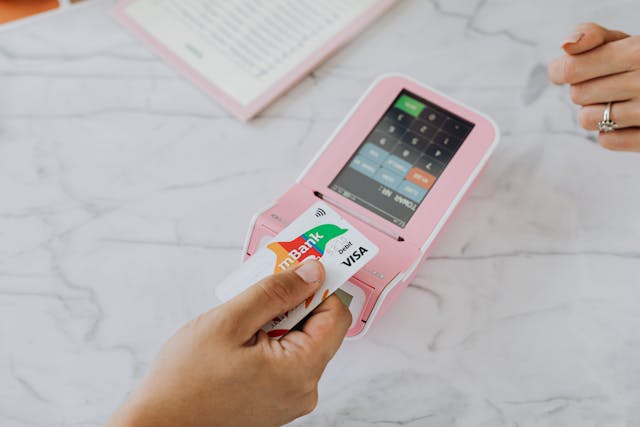Visa, one of the world’s largest and most recognized financial services companies, has long been a master of marketing. Its strategies have consistently kept it at the forefront of the payments industry. For marketing professionals, understanding Visa’s approach offers valuable insights into brand building, consumer engagement, and the power of consistent messaging. Here, we’ll explore Visa’s marketing strategy, highlighting key campaigns and tactics that have driven its success.
Understanding Visa’s Brand Identity
Visa’s brand identity is anchored in trust, security, and global acceptance. From its inception, Visa positioned itself not just as a credit card company but as a reliable financial partner facilitating seamless transactions worldwide. This positioning is critical, given the nature of its business, where consumer trust is paramount.
Global Reach with Local Sensitivity
One of Visa’s standout strategies is its ability to maintain a global brand while tailoring its messaging to local markets. This dual approach allows Visa to resonate with a diverse range of consumers across different cultures and economies.
Case Study: The “Everywhere You Want to Be” Campaign
Visa’s “Everywhere You Want to Be” campaign is a quintessential example of its global-local strategy. Launched in 2014, this campaign revived Visa’s long-standing tagline from the 1980s. The modern iteration focused on the idea that Visa enables experiences and opportunities, transcending mere transactions.
Global Appeal: The campaign featured diverse imagery and stories that emphasized Visa’s global presence. It showed consumers using Visa cards for a variety of purposes—travel, dining, shopping, and more—highlighting the brand’s versatility.
Local Relevance: While maintaining a global theme, Visa adapted the campaign to reflect local contexts. In Japan, for instance, the campaign emphasized Visa’s role in enabling smooth travel experiences for both locals and international visitors, particularly around major events like the Tokyo Olympics. In Latin America, the focus shifted to promoting financial inclusion and digital payments.
Embracing Innovation and Technology
Visa has always been at the forefront of payment innovation. Its marketing strategies often highlight these technological advancements, positioning Visa as a leader in the evolving financial landscape.

Case Study: Visa Checkout
Visa Checkout, a digital payment service, was introduced to simplify online shopping. The marketing campaign for Visa Checkout was designed to highlight its ease of use and security, addressing common consumer pain points associated with online payments.
Ease of Use: The campaign included instructional videos and simple graphics showing how quickly users could set up and use Visa Checkout. This approach demystified the technology for less tech-savvy consumers.
Security: Visa leveraged its reputation for security, assuring users that their information was protected. The campaign featured testimonials and endorsements from well-known online retailers, reinforcing trust.
Partnerships: Visa collaborated with major retailers like Starbucks and The Gap, offering promotions and discounts to users who signed up for Visa Checkout. These partnerships not only incentivized adoption but also showcased the service’s broad acceptance.
Sponsorship and Event Marketing
Sponsorships and event marketing play a crucial role in Visa’s strategy. By associating with high-profile events and organizations, Visa enhances its visibility and reinforces its brand values.
Case Study: Olympic Games Sponsorship
Visa has been a global sponsor of the Olympic Games since 1986. This long-term partnership underscores Visa’s commitment to global unity and excellence—values that align well with the spirit of the Olympics.
Brand Visibility: During the Olympics, Visa ensures its brand is omnipresent, from advertisements to sponsorship mentions during broadcasts. This massive exposure helps cement Visa’s status as a global leader.
Consumer Engagement: Visa’s Olympic campaigns often feature athletes from different countries, fostering a sense of global community. For the 2020 Tokyo Olympics, Visa created personalized content for different markets, featuring local athletes and stories, which enhanced relatability and engagement.
Innovation Showcase: The Olympics provide a platform for Visa to showcase its latest payment technologies. For instance, during the 2016 Rio Olympics, Visa introduced wearable payment devices, demonstrating its leadership in innovative payment solutions.
Leveraging Celebrity Endorsements and Influencers
Visa frequently collaborates with celebrities and influencers to amplify its marketing messages. These endorsements help Visa reach broader audiences and add a touch of personality to the brand.
Case Study: Morgan Freeman and the Visa Brand
Morgan Freeman’s distinctive voice has been a staple in Visa’s advertising for years. His authoritative and comforting tone adds a layer of trust and credibility to the brand’s messages.
Consistency and Trust: Freeman’s consistent presence in Visa’s ads creates a sense of familiarity and reliability. His voiceovers have become synonymous with Visa’s commitment to security and ease of use.
Broad Appeal: Freeman’s universal appeal ensures that the ads resonate with a wide demographic, from younger consumers who appreciate his film work to older audiences who trust his wisdom.
Digital and Social Media Marketing
In the digital age, Visa has adeptly utilized social media and digital platforms to connect with consumers, particularly younger audiences. These channels allow for more interactive and engaging marketing approaches.
Case Study: #VisaOnesToWatch
The #VisaOnesToWatch campaign on Instagram and Twitter highlights emerging athletes, particularly those who are preparing for major events like the Olympics. This campaign serves multiple purposes:
Engagement: By featuring up-and-coming athletes, Visa engages sports fans and creates a narrative that followers can invest in over time.
Content Creation: The campaign generates a wealth of content that Visa can share across its social media channels, keeping the brand active and relevant in followers’ feeds.
Positive Association: Supporting young athletes aligns Visa with values of ambition and potential, which are appealing to younger consumers.

Data-Driven Marketing
Visa’s marketing strategies are heavily data-driven. By analyzing consumer behavior and transaction data, Visa can tailor its campaigns to meet specific needs and preferences.
Case Study: Personalized Offers and Rewards
Visa’s use of data analytics allows it to offer personalized deals and rewards to cardholders. This strategy not only enhances customer satisfaction but also drives usage and loyalty.
Targeted Campaigns: Visa can segment its customer base and deliver targeted promotions. For example, frequent travelers might receive offers related to travel insurance or hotel discounts, while online shoppers could get cashback deals for e-commerce purchases.
Behavioral Insights: By analyzing spending patterns, Visa can predict future behaviors and preferences, allowing for more proactive and relevant marketing. This not only boosts engagement but also enhances the overall customer experience.
Corporate Social Responsibility (CSR) and Cause Marketing
Visa understands the importance of CSR and incorporates it into its marketing strategy to build a positive brand image and connect with socially-conscious consumers.
Case Study: Financial Literacy Programs
Visa’s financial literacy programs are a cornerstone of its CSR efforts. These programs aim to educate consumers about managing their finances, using credit responsibly, and understanding the importance of savings.
Educational Campaigns: Visa’s campaigns often include informative content such as videos, articles, and interactive tools. These resources help consumers make informed financial decisions, reflecting Visa’s commitment to their well-being.
Community Involvement: Visa partners with schools, non-profits, and community organizations to deliver financial literacy education. This grassroots approach enhances credibility and demonstrates Visa’s dedication to making a positive impact.
Integrated Marketing Communications
Visa’s success is also attributed to its integrated marketing communications (IMC) approach. By ensuring that all marketing efforts are aligned and consistent across various channels, Visa creates a unified and coherent brand message.
Case Study: Integrated Campaigns
Visa’s integrated campaigns combine traditional advertising, digital marketing, public relations, and more to create a seamless brand experience.
Cross-Channel Consistency: Whether it’s a TV commercial, a social media post, or an in-store display, Visa maintains consistent messaging and visual identity. This coherence strengthens brand recognition and trust.
Multi-Touchpoint Engagement: Visa ensures that consumers encounter its brand across multiple touchpoints. For example, a consumer might see a Visa ad on TV, receive an email promotion, and then notice a sponsored post on social media. This repeated exposure reinforces the brand message and encourages action.
Lessons from Visa’s Marketing Strategy
Visa’s marketing strategy is a comprehensive blend of global vision, local adaptation, technological innovation, strategic partnerships, and consistent messaging. By understanding and implementing these strategies, marketing professionals can draw valuable lessons for their own campaigns. Visa’s ability to balance trust and innovation, maintain global appeal while being locally relevant, and leverage data for personalized marketing, sets a high standard in the industry. Their success is a testament to the power of a well-rounded, strategic approach to marketing.
For marketers looking to emulate Visa’s success, the key takeaway is to build a strong, trustworthy brand identity, embrace technological advancements, tailor messaging to local markets, and maintain consistent, integrated communications across all channels. With these principles, any brand can aim to create impactful and memorable marketing campaigns.
Here are five essential takeaways:
1. Build a Strong and Trustworthy Brand Identity
Visa’s brand identity is centered on trust, security, and global acceptance. Marketers should prioritize establishing and maintaining a brand image that resonates with these or other core values relevant to their industry. This includes delivering consistent messaging across all platforms to reinforce the brand’s reliability and commitment to customer satisfaction.
Lesson: Develop a clear and compelling brand identity that consistently communicates your core values. Trust and reliability should be at the heart of your messaging to build long-term consumer loyalty.
2. Adapt Global Campaigns to Local Markets
Visa excels at balancing a global brand presence with local market relevance. Tailoring campaigns to reflect local cultures, needs, and preferences ensures broader appeal and deeper connections with diverse audiences.
Lesson: While maintaining a global brand identity, customize your campaigns to resonate with local audiences. Understanding cultural nuances and market-specific behaviors will make your marketing efforts more effective and relatable.
3. Embrace and Highlight Technological Innovation
Visa positions itself as a leader in payment technology, showcasing innovations like Visa Checkout and wearable payment devices during high-profile events. Highlighting technological advancements not only demonstrates industry leadership but also meets consumer demand for convenience and security.
Lesson: Incorporate technological innovations into your marketing strategy and communicate their benefits clearly to consumers. Showcasing your brand’s cutting-edge solutions can set you apart from competitors and address consumer pain points.
4. Leverage Strategic Partnerships and Sponsorships
Visa’s long-standing sponsorship of the Olympic Games and partnerships with major retailers illustrate the power of strategic alliances. These collaborations enhance brand visibility, credibility, and consumer engagement.
Lesson: Identify and pursue strategic partnerships and sponsorship opportunities that align with your brand values and objectives. Such alliances can significantly boost your brand’s reach and reputation.
5. Use Data-Driven Marketing for Personalization
Visa utilizes data analytics to offer personalized deals and rewards, enhancing customer satisfaction and loyalty. By understanding consumer behavior through data, marketers can tailor their campaigns to meet specific needs and preferences.
Lesson: Harness the power of data analytics to gain insights into consumer behavior and preferences. Use this information to create personalized marketing campaigns that increase relevance and engagement, leading to higher customer retention and satisfaction.

